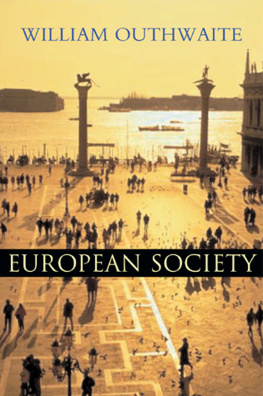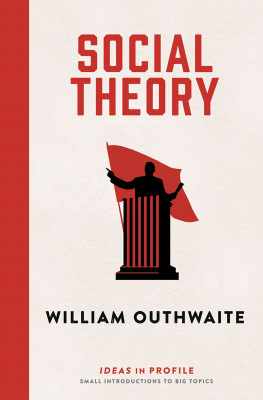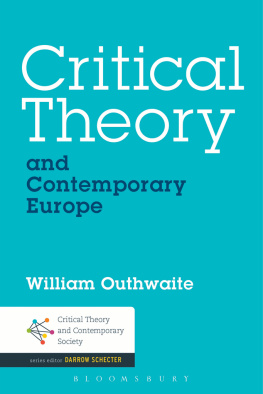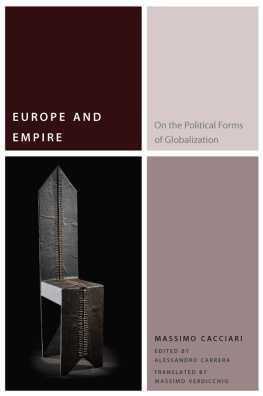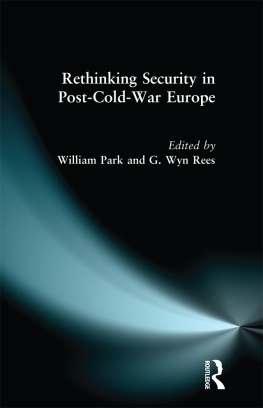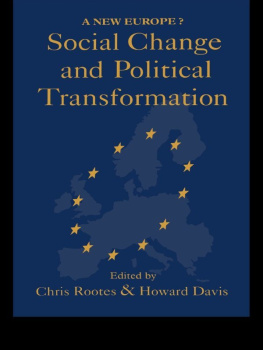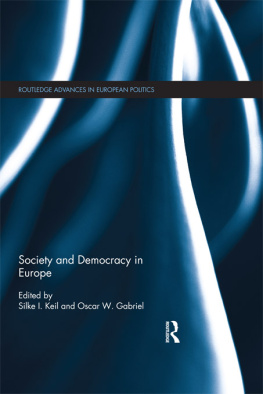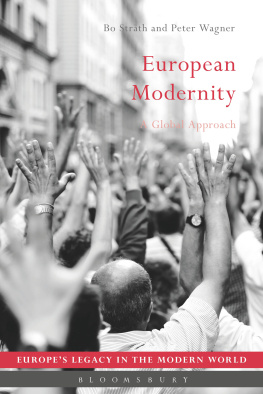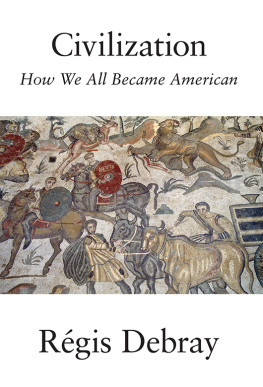I should like to thank Hettie Peters, Daniel Steuer and participants at seminars at SOAS, Kent and Sussex for their comments on a much earlier version of what appears here as chapter one, and Gyrgy Szll, who subsequently published it in an edited volume (Szll, 2001). My discussion of postcommunist Europe is substantially shaped by my work with Larry Ray on our joint book Social Theory and Postcommunism (Outhwaite and Ray, 2005). Jacqueline OReilly and Sabina Avdagic generously shared their knowledge of contemporary European political economy and commented helpfully on my autodidactic efforts to catch up with this rapidly growing field. A work of synthesis such as this inevitably incurs huge debts to the Europeanist community as a whole, as reflected in the footnotes and bibliography.
EUROPEAN CULTURE AND SOCIETY
1 Introduction
Why yet another book on Europe? Well, systematic attempts to discuss European society as a whole are actually rarer than one might think. There are of course innumerable histories of Europe, the best of which attempt to avoid national or regional biases in their treatment of the continent. There are what one might call long-essay books, such as those by Romano Prodi (2000) and Zygmunt Bauman (2004). There are excellent detailed studies of the European Union as a whole (Rumford, 2002) or, more often, specific aspects of its workings. Finally, there are books, often multi-authored, which discuss Europe piecemeal according to disciplinary or national divisions.
The genre to which this book aims to contribute is marked out by a (so far) smallish range of key contributions: Therborn (1995); Crouch (1999); and Mnch (1993); more recently, Beck and Grande (2004); Delanty and Rumford (2005); and Delanty (2006b). It is one informed by the social theory of the last few decades in particular, the revival of historical sociology and, more broadly, theories of modernity and, secondly, the growth of postcolonial theory and its application to European history. These two theoretical revolutions coincided, of course, with the anti-communist protest movements of the 1980s, the anti-communist revolutions of 1989 and the postcommunist transition which followed. It is, in short, a contribution to what is sometimes called the new direction in European Studies (Rumford, 2007; see also Calhoun, 2003).
The main argument in this book is that it makes sense to treat Europe as a whole, rather than the sum of its component states and regions. This does not mean that there is some sort of essence to Europe, emerging historically and realizing itself through successive centuries. Rather, Europe should be seen as a region of the world, with an open frontier to Asia (of which it forms a peninsula) and close links of various kinds to the other continents of Africa, America and Australasia. The European region came to be perceived, and to act, as in some respects a single, if complex, entity. In particular, it functioned as a crucible in which social forms of production and organization, often imported from more advanced civilizations elsewhere in the world, were developed and subsequently re-exported. The technologies of textile production and warfare are examples of this, but so are democratic politics, individualism and other aspects of what is generally known as modernity. This contentious yet fundamental link between Europe and modernity means that to study Europe historically one cannot treat it as just one world region among others, even if a global frame of reference is the most appropriate one to use (Bhambra, 2007). It is only in the recent past, as the economic and political forms of modernity have spread, if unevenly, across the globe, that we can ask what, if anything, is distinctive about European modernity, modernity in Europe.
The following chapters attempt to do this. This chapter examines the geographical and historical background to European culture and society, setting the scene for the more detailed discussions which follow. Chapter 2 looks in more detail at Europes internal geographical differentiation and its location as a whole between East and West, North and South. The third chapter is concerned with the two economic formations found in contemporary Europe, capitalism and, for much of the past century, state socialism. Whereas the socialist economies followed more or less closely a standard Soviet pattern, European capitalism is differentiated between the extremes of Anglo-Saxon liberalism and the more statist or otherwise institutionally embedded economies of continental Europe. Chapter 4 looks, in a complementary way, at Europes characteristic forms of state: the liberal (and eventually democratic) state and the totalitarian or authoritarian dictatorship. The second type is found in fascist Europe in the mid-twentieth century, surviving longest in Spain and Portugal and with a brief resurgence in Greece under the Colonels regime, and in the Soviet-style Marxist-Leninist state. Liberal democratic forms of rule are again differentiated according to, crudely, the greater or lesser role of the state apparatus. Here we find a third type of polity emer-ging, in the form of the European Union: one with affinities to the historical empires in Europe and elsewhere but fundamentally different in its democratic structure and what has come to be called soft power. Chapter 5 examines the divisions and commonalities of European society and societies, according to class, ethnicity and gender and the ways in which these operate in different parts of the continent. The concluding chapter attempts to situate Europe as a region of a globalized world. This is a world substantially shaped by Europeans in the long century of European hegemony running from the late eighteenth century to the mid-twentieth, but it has become a world in which Europe, rather like classical Greece, now has to take a more modest place.

